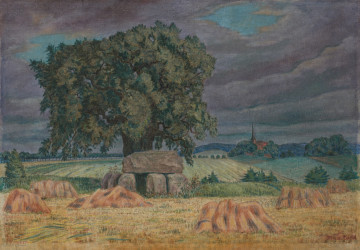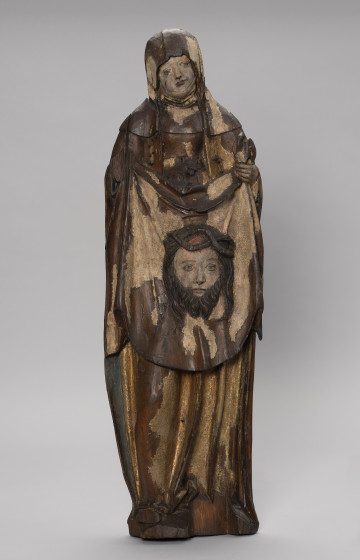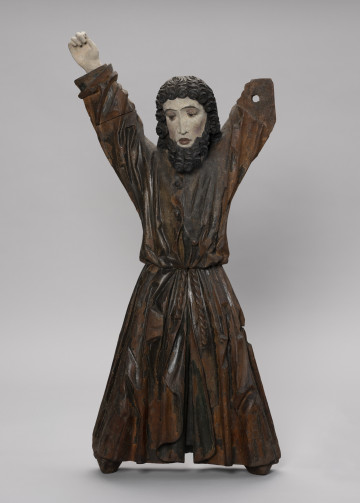
Landscape
1926
National Museum in Szczecin
Part of the collection: European classics of modernity
In the last quarter of the 19th century prehistoric and early modern Pomerania became an object of study for many Slavists. The first wave of reaction to German texts hostile to the Polish raison d'état came from Russian-language works. These included a book by Osip Osipowicz Perwolf, a Czech lecturer at the Imperial University of Warsaw, entitled Germanizacija Bałtijskich Sławjan (Germanisation of Baltic Slavs, Saint Petersburg 1876). Two years later, the Poznań Society of Friends of Science announced a historical competition for Polish researchers to describe this issue. The winner was Karol Emil Sieniawski, a gymnasium teacher active in Düsseldorf, author of Pogląd na dzieje Słowian zachodnio-północnych [A View on the History of Western and Northern Slavs] (Gniezno 1881). The academic painting by Wojciech Gerson, which depicts a multigenerational Slavic family drifting in a huge boat towards the Danish lands, should be seen in the perspective of the reception of these texts. The artist, who came from a polonised German-French family, functioned in the orbit of influence of all the mentioned intellectual circles as a graduate of the St. Petersburg Academy of Fine Arts, a professor of the Warsaw Drawing Class, and from 1887 - a correspondent member of PTPN. He seemed to draw formal patterns from German painting, in which the themes of displacement, expulsion and migration of peoples were often taken up. A scene of similar composition and expression was presented in 1860 by the Berlin artist Antonie Volkmar. Her painting Pożegnanie uchodźców [Farewell to Refugees] referred to the contemporary emigration of compatriots to North America. A year later, the Belgian artist Wilhelm Ferdinand Pauwels, active in German countries, dressed the refugees in Renaissance costumes, depicting the 16th-century Wygnańcy księcia Alby [Exiles of the Duke of Alba]. The painting was popularised by a reproduction woodcut published in 1885.
Szymon Piotr Kubiak
Author / creator
Dimensions
cały obiekt: height: 114,8 cm, width: 207 cm
Object type
painting
Creation time / dating
Creation / finding place
Identification number
Location / status

1926
National Museum in Szczecin

circa 1520 — 1530
National Museum in Szczecin

circa 1520
National Museum in Szczecin
DISCOVER this TOPIC
National Museum in Lublin
DISCOVER this PATH
Educational path